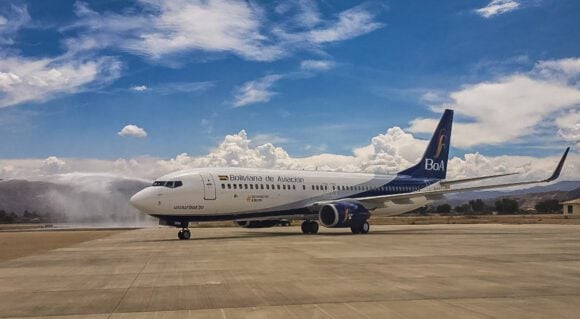
AP Photo/Manuel Valdes
The Boeing strike continues, and the bread-and-butter 737 line appears frozen. The damage from this strike is being felt across the supply chain, and the damage is severe. That severity grows daily. How long the supply chain will need to recover is unclear. The supply chain is still battling the pandemic and great retirement. This new external shock pushes that recovery further to the right. Our view is that there are no winners here, and everyone loses.
So far, Boeing has been able to deliver a few aircraft that were out of the FAL. Here is our delivery tracker data.

The variance each month is interesting. The total numbers also show wide variation. These variances are most likely supply-chain-related until September. Boeing has many stored 737s it could deliver. However, the few people left working cannot operate at the same levels as the whole team. As Bank of America noted yesterday: “On the other hand, there has been no activity for customer acceptance flights involving Chinese Airlines over the last month, while reactivations are on hold, as some of these aircraft recently taken out from storage were not ultimately delivered. As of September 20th, 99 (unchanged) of the original 140 Chinese parked aircraft have been reactivated.”

Fortunately, Boeing can deliver 787s, and happily, the market is taking the larger, more expensive models. The Charleston FAL has had its share of negative news. However, there is an upside for Boeing. Moving 787 production to Charleston has derisked their business to some extent. This move still annoys the IAM in Seattle as the concern about Boeing’s next airplane staying in Puget Sound is crucial.
Boeing’s rough labor history is why the Charleston plant was created. It seems to be a salve now. However, it has not solved the essential friction between management and labor. Something is deeply wrong with the culture, leaving both sides at odds and leading to strikes every few years.
We recommend this article to understand better how far and wide the impact of this strike is. People in the supply chain express their dismay at the turn of events. Aerospace suppliers have a long tail delivering spares after delivery. Few people outside the industry comprehend how long that tail is before a delivery, from sourcing materials to forging and machining to the highest standards. The first steps in an aircraft’s life start a year before it flies.
It is also crucial to understand that every person involved in the supply chain is highly trained or is supposed to be. Every part has a number, making it traceable. The symphony of people and parts is finely tuned to operate efficiently, which is why the pandemic was so disruptive—the symphony’s music became bedlam. And here we are again!
So far, over $550m in lost revenues have occurred. That does not include disrupting airline customer network planning and, eventually, the traveling public and consumers dependent on air freight. It also does not include the cost to the supply chain that ordered materials and built parts. The supply chain firms bear that cost. The supply chain is recovering, and some firms have already entered Chapter 11 reorganization. This was before the strike.
As we noted at the start, there are no winners here.
Views: 5




